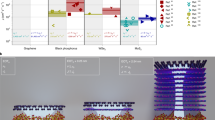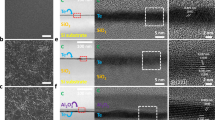Abstract
Molybdenum has several properties that make it attractive as a CMOS gate electrode material. The high melting point (∼2610°C) and low coefficient of thermal expansion (5×10−6/°C, at 20 °C) are well suited to withstand the thermal processing budgets normally encountered in a CMOS fabrication process. Mo is among the most conductive refractory metals and provides a significant reduction in gate resistance as compared with doped polysilicon. Mo is also stable in contact with SiO2 at elevated temperatures. In order to minimize short-channel effects in bulk CMOS devices, the gate electrodes must have work functions that correspond to Ec (NMOS) and Ev (PMOS) in Si. This would normally require the use of two metals with work functions differing by about 1V on the same wafer and introduce complexities associated with selective deposition and/or etching. In this paper, the dependence of the work function of Mo on deposition and annealing conditions is investigated. Preliminary results indicate that the work function of Mo can be varied over the range of 4.0-5.0V by a combination of suitable post-deposition implantation and annealing schemes. Mo is thus a promising candidate to replace polysilicon gates in deep sub-micron CMOS technology. Processing sequences which might allow the work function of Mo to be stabilized on either end of the Si energy band gap are explored.
Similar content being viewed by others
References
International Technology Roadmap for Semiconductors, Semiconductor Industry Association, 1999
Q. Lu, Y.-C. Yeo, P. Ranade, T.-J. King, C. Hu, 2000 Symposium on VLSI Technology, IEEE, 2000, pp.72
R. Beyers, Journal of Applied Physics, 56 (1), 1 July1984, pp.147
H. Matsuhashi and S. Nishikawa, Japan Journal of Applied Physics, v.33, no.3A, (1994), pp.1293
R. G. Wilson, Journal of Applied Physics, v.37, no.8, July1966, pp.3170
P. Shah, IEEE Transactions on Electron Devices, v.ED-26, no.4, April1979, pp.631
M.J. Kim and D.M. Brown, IEEE Transactions on Electron Devices, v.ED–30 no.6, June1983, pp.598
T. Ishiguro and T. Sato, Materials Transactions, JIM, v.39, no.7 (1998), pp.731
R. Brown et al., IEEE Micro Electro Mechanical Systems Proceedings. An Investigation of Microstructures, Sensors, Actuators, Machines and Robots, Napa Valley, CA, USA, 11-14 Feb.1990.), 1990. pp.77–81.
M.J. Kim and D.M. Brown, J. Electrochemical Society, v.130, no.10, 1983, pp.2104
Author information
Authors and Affiliations
Rights and permissions
About this article
Cite this article
Ranade, P., Yeo, YC., Lu, Q. et al. Molybdenum as a Gate Electrode for Deep Sub-Micron CMOS Technology. MRS Online Proceedings Library 611, 321 (1999). https://doi.org/10.1557/PROC-611-C3.2.1
Published:
DOI: https://doi.org/10.1557/PROC-611-C3.2.1




